Guy Clarke Marshall
Number and quality of diagrams in scholarly publications is associated with number of citations
Apr 30, 2021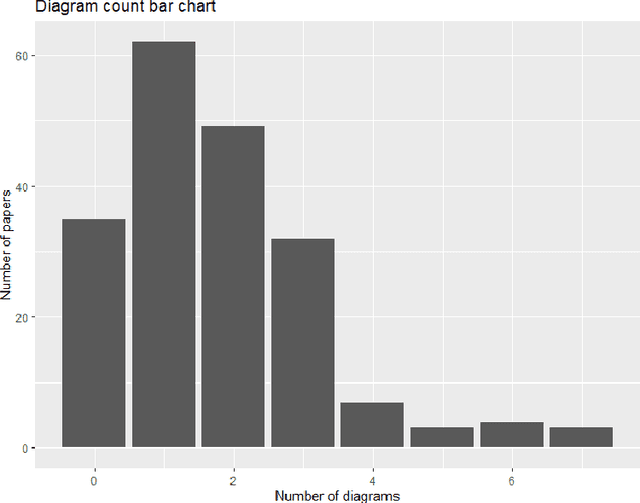
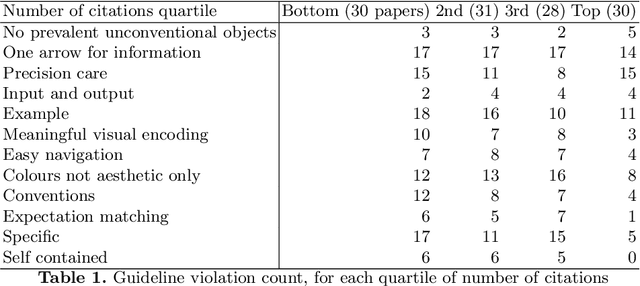
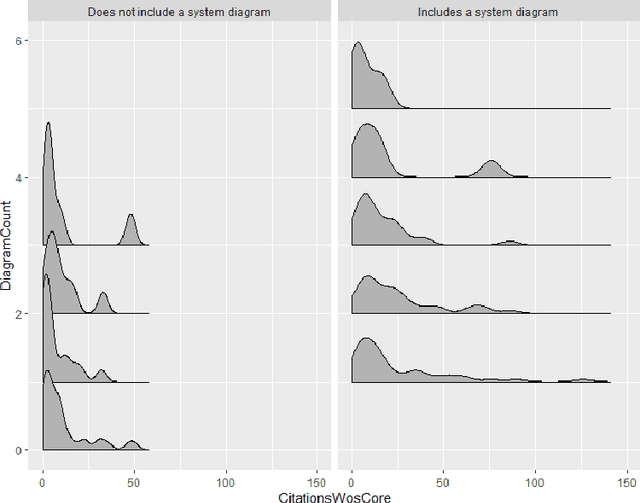

Abstract:Diagrams are often used in scholarly communication. We analyse a corpus of diagrams found in scholarly computational linguistics conference proceedings (ACL 2017), and find inclusion of a system diagram to be correlated with higher numbers of citations after 3 years. Inclusion of over three diagrams in this 8-page limit conference was found to correlate with a lower citation count. Focusing on neural network system diagrams, we find a correlation between highly cited papers and "good diagramming practice" quantified by level of compliance with a set of diagramming guidelines. Two diagram classification types (one visually based, one mental model based) were not found to correlate with number of citations, but enabled quantification of heterogeneity in those dimensions. Exploring scholarly paper-writing guides, we find diagrams to be a neglected media. This study suggests that diagrams may be a useful source of quality data for predicting citations, and that "graphicacy" is a key skill for scholars with insufficient support at present.
Scholarly AI system diagrams as an access point to mental models
Apr 30, 2021



Abstract:Complex systems, such as Artificial Intelligence (AI) systems, are comprised of many interrelated components. In order to represent these systems, demonstrating the relations between components is essential. Perhaps because of this, diagrams, as "icons of relation", are a prevalent medium for signifying complex systems. Diagrams used to communicate AI system architectures are currently extremely varied. The diversity in diagrammatic conceptual modelling choices provides an opportunity to gain insight into the aspects which are being prioritised for communication. In this philosophical exploration of AI systems diagrams, we integrate theories of conceptual models, communication theory, and semiotics. We discuss consequences of standardised diagrammatic languages for AI systems, concluding that while we expect engineers implementing systems to benefit from standards, researchers would have a larger benefit from guidelines.
Structuralist analysis for neural network system diagrams
Apr 30, 2021


Abstract:This short paper examines diagrams describing neural network systems in academic conference proceedings. Many aspects of scholarly communication are controlled, particularly with relation to text and formatting, but often diagrams are not centrally curated beyond a peer review. Using a corpus-based approach, we argue that the heterogeneous diagrammatic notations used for neural network systems has implications for signification in this domain. We divide this into (i) what content is being represented and (ii) how relations are encoded. Using a novel structuralist framework, we use a corpus analysis to quantitatively cluster diagrams according to the author's representational choices. This quantitative diagram classification in a heterogeneous domain may provide a foundation for further analysis.
How Researchers Use Diagrams in Communicating Neural Network Systems
Aug 31, 2020


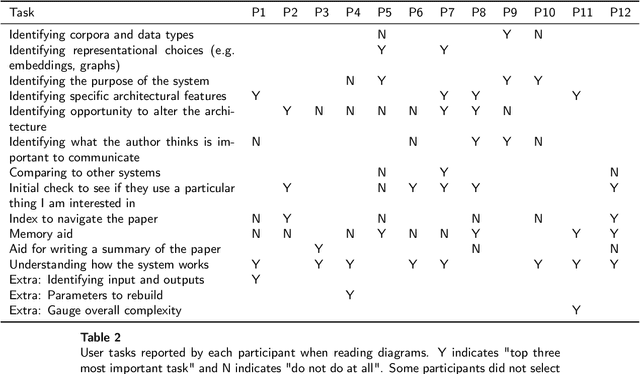
Abstract:Neural networks are a prevalent and effective machine learning component, and their application is leading to significant scientific progress in many domains. As the field of neural network systems is fast growing, it is important to understand how advances are communicated. Diagrams are key to this, appearing in almost all papers describing novel systems. This paper reports on a study into the use of neural network system diagrams, through interviews, card sorting, and qualitative feedback structured around ecologically-derived examples. We find high diversity of usage, perception and preference in both creation and interpretation of diagrams, examining this in the context of existing design, information visualisation, and user experience guidelines. Considering the interview data alongside existing guidance, we propose guidelines aiming to improve the way in which neural network system diagrams are constructed.
Understanding scholarly Natural Language Processing system diagrams through application of the Richards-Engelhardt framework
Aug 26, 2020
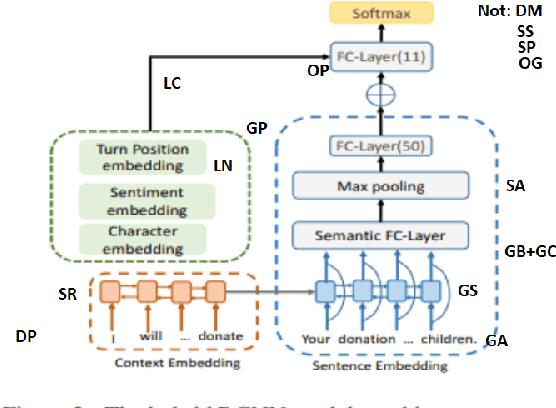
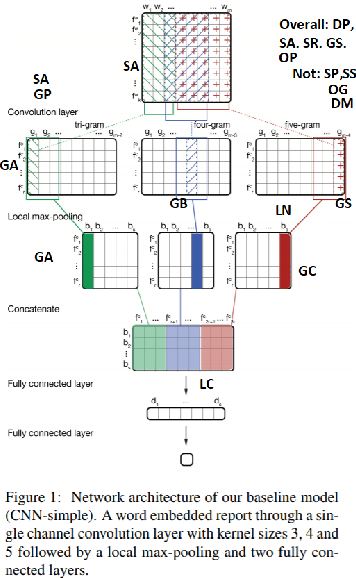

Abstract:We utilise Richards-Engelhardt framework as a tool for understanding Natural Language Processing systems diagrams. Through four examples from scholarly proceedings, we find that the application of the framework to this ecological and complex domain is effective for reflecting on these diagrams. We argue for vocabulary to describe multiple-codings, semiotic variability, and inconsistency or misuse of visual encoding principles in diagrams. Further, for application to scholarly Natural Language Processing systems, and perhaps systems diagrams more broadly, we propose the addition of "Grouping by Object" as a new visual encoding principle, and "Emphasising" as a new visual encoding type.
 Add to Chrome
Add to Chrome Add to Firefox
Add to Firefox Add to Edge
Add to Edge